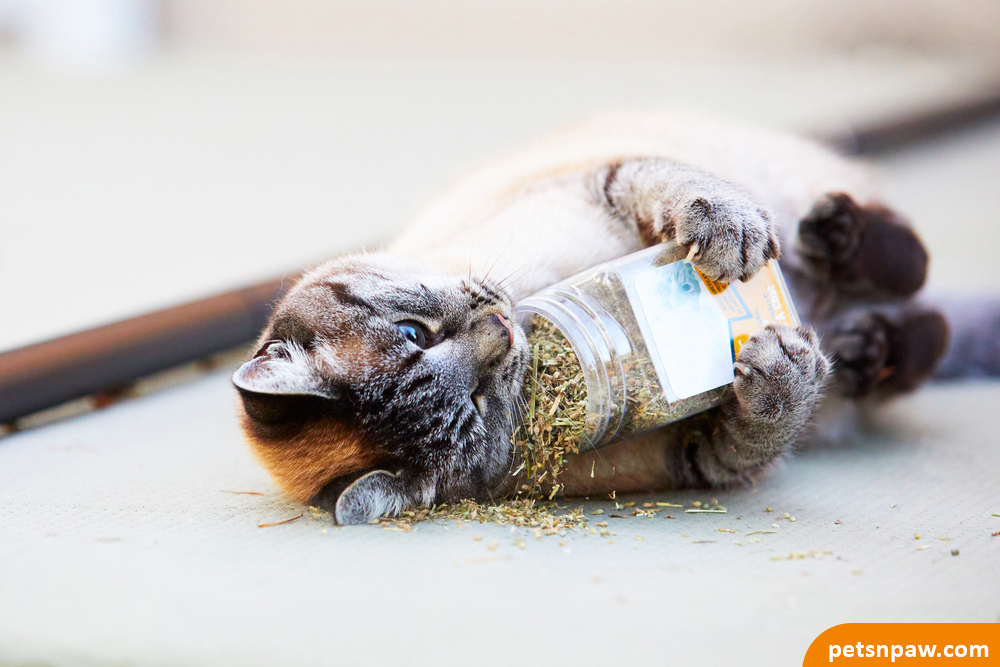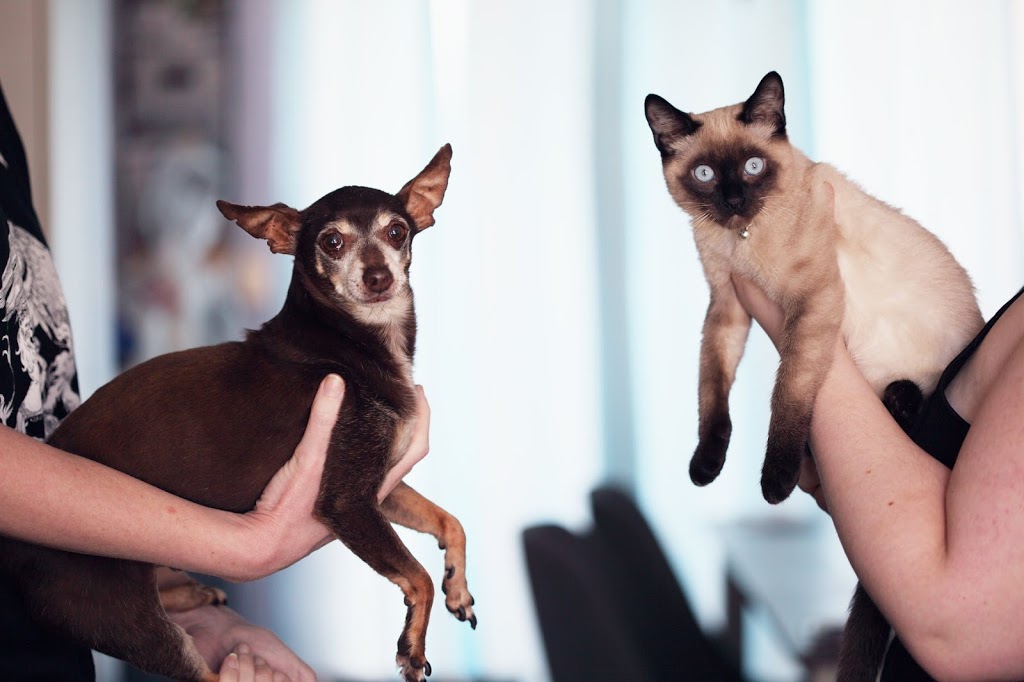Catnip, commonly known as catnip, catswort, catwort, and catmint . Lions, tigers, your common domestic kitten just can’t seem to get enough of this fragrant herb.
Catnip’s spell:

Smelling or Eating it?
The most intense catnip experience starts with the nose. One whiff of the stuff and your cat promptly goes nuts. Researchers suspect that catnip targets kitten “happy” receptors in the brain. When eaten, however, catnip tends to have the opposite effect and your cat mellows out.
Most cats react to catnip by rolling, flipping, rubbing, and eventually zoning out. They may meow or growl at the same time. Other cats become hyperactive or downright aggressive, especially if you approach them.
Usually these sessions last about 10 minutes, after which your cat loses interest. It may take as long as two hours for him to “reset” and become susceptible to catnip again. Be mindful of overindulgence though—cats are unlikely to overdose on catnip, but they can get sick if they eat too much. Trust your kitty to know when they’ve had enough.

Toys and Training
Because cats do respond to catnip, the herb could be a powerful training aid.
Want to keep kitty from clawing furniture? Rub a scratching post with catnip to make it more appealing. Bought a new cat bed? Sprinkle a little of the herb on kitty’s cushion to make it more attractive to your feline friend.
You can also provide enrichment for an indoor kitty by creating catnip-toys. Sprinkle a bit of the herb into an old sock, then knot the top. Or put a big pinch of the herb in a small paper bag and crush the bag into a tight ball.






